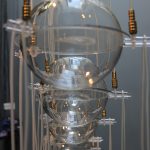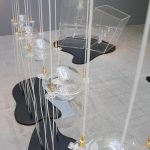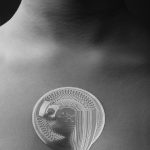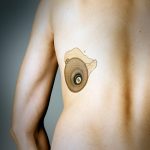Konstfack University College of Arts, Crafts and Design (Stockholm, Sweden)

Designer: Farvash Razavi
Dimensions: Installation 1.5 x 3 m
Tutor: Ronald Jones
Degree: MA, Experience Design Group
Project Description
The chaotic and intuitive takes form in this work and serves as evidence of the possibilities that exist between the worlds of science and design. In mythology, creation begins at an invisible, macro-level and follows through to the grossest state of physical existence. Similarly, Farvash Razavi’s work begins at the nano-scale, as she works side by side with cutting-edge material scientists who have helped her create the required qualities of the materials used to form the final products.
According to the designer, the scale of creation is important because everything we know is composed of components at various levels; in the greater scheme of things, we are also modules. Farvash Razavi’s ongoing collaboration with scientists, in conjunction with her personal understanding and mastery of various visual media, offers the spectator a glimpse onto the world of tomorrow.
Konstfack Experience Design Group
Experience Design is a response to the urgent question: How might design continue to be relevant within what many are calling the I-Cubed (Information, Innovation, Intangible) Economy? A ride on a rollercoaster at Disneyland is an intangible that takes place over time; it is entertaining and valuable: An interdisciplinary team no doubt designed it before we knew to call them “experience designers.” So too with healthcare, another intangible that takes place over time, gives care and is valuable — although by now healthcare professionals know to call on experience designers to apply methodologies such as design thinking, future forecasting, and experience prototyping to improve patient recovery time. Increasingly design has gained a greater sphere of influence, which is to say that it has become progressively more interdisciplinary or even post disciplinary. At The Experience Design Group we implement the belief that designers should be educated as critical thinkers and strategists capable of addressing cross-disciplinary problems; we design social, political, economic and educational “systems,” which in turn provide designers with greater reach, responsibility, influence and relevance. Experience Design, in other words, does not end at the limits of design; it goes beyond those borders to include human capital, leadership, research and development, goodwill, innovation, social media, collaboration, organizational ability, systems design, interdisciplinary, effectiveness, soft power, productivity and new knowledge, which have become the real determinants of performance and value in the I-Cubed Economy. And Experience Designers are its change agents.

















